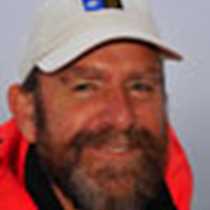Rothera Research Station, Adelaide Island
We have come further south than any expedition ship in the Peninsula this season, skirting the frozen western coast of Adelaide Island yesterday to reach Marguerite Bay and our furthest south at latitude 67¢ª50.6’, well inside the Antarctic Circle. To add accolade to audacity, we have been invited to visit Rothera Base, a special concession granted to only a handful of ships each season. Not only that, but it is late summer now, and we are the first ship to have reached this remote outpost. Rothera Base is a research station operated by British Antarctic Survey, with its own marine laboratory, field research and gravel airstrip. Adelaide Island was first sighted by the English whaling ship “Tula” in 1832, and named after Queen Adelaide, wife of King William IV. In 1957 two British surveyors, John Rothera and Peter Gibbs crossed the frozen sea ice to reach this, the most southern point and it has proved to be an ideal base for field research by British scientists in this area.
We made a careful approach to the dockside, but the incoming swells made it just too risky to tie up, so within minutes we had reverted to Zodiacs and a beach landing. In the time it took to get ashore, the weather changed from clear skies to dense, swirling snowflakes, adding a truly polar atmosphere to the excitement of our visit. The base scientists were delighted to see us, and took us around all the main buildings of this smart, modern, well-appointed research base. It has a gravel airstrip and 5 planes, a Dash 7 (which maintains contact across the Drake with either the Falklands or Punta Arenas in Chile), and three Twin Otter aircraft, which drop scientists out at field camps, to gather geological and ice data. We were shown one of the Scott tents, which are still in use and will keep 2 men warm, dry and safe for up to 2 months out at the field camps. The field section houses and repairs tents, sleeping bags, skis, Primus stoves and climbing gear, with a seriously impressive tool board, a sure sign of real work! In the Marine Labs we were shown some of the fish and marine creatures, which are collected to study the effects of climate change in Marguerite Bay. Salinity and water temperatures are recorded, detailed weather data collected for global weather forecasting, and DNA analysis of marine organisms is revealing some of the secrets of evolution in this extreme environment. The base is in use year-round, with a complement of 100-plus international personnel in summer and a hardy crew of 22 remaining throughout the winter. A fascinating insight into Antarctic science, rounded off with a bit of retail therapy at their small shop and a chance to send postcards home at the same time. After a lavish tea of homemade cream and jam scones with man-sized shortbread to match, several of us commented that perhaps overwintering down here would be more than bearable.
Quite what Scott or Amundsen would have made of this luxury is hard to say: Eduardo recounted their epic Race for the South Pole in the afternoon, and we were also treated to some of David Doubilet and Jen Haye’s stunning underwater images from around the world, as we took to the seas ourselves once again, retracing our steps to the north.




